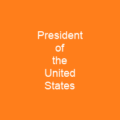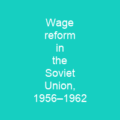Understanding Executive Orders in the United States
Imagine a powerful tool that can shape policies, enforce laws, and even wage wars. That’s what an executive order is—a directive from the president that manages federal operations. But how does it work exactly? And why do some people view them with such scrutiny?
The Legal Basis of Executive Orders
According to Article Two of the US Constitution, executive orders are a legal mechanism. They can be supported by congressional law or the constitution itself. However, they’re not without limits; all must be rooted in the Constitution or a statute and are subject to judicial review.
The Power of the President
Presidents wield significant influence over policy choices. They can enforce legislation, deal with emergencies, and even wage wars through executive orders. But how far does this power extend? The answer isn’t always clear-cut, as constitutional issues remain unresolved.
A Brief History of Executive Orders
The first executive order was issued by George Washington on June 8, 1789. Since then, every president has used them to varying degrees. Abraham Lincoln’s Emancipation Proclamation is perhaps the most famous, but it wasn’t until the early 1900s that executive orders became more formalized.
Notable Presidents and Their Orders
Franklin D. Roosevelt holds the record for issuing the most executive orders—3,721. His first order in 1933 declared a bank holiday and forbade banks from releasing gold coin or bullion. Harry Truman’s Executive Order 10340 placed all steel mills under federal control, but it was found invalid because it attempted to make law.
Controversies and Challenges
The use of executive orders has faced significant scrutiny. For instance, President Franklin Roosevelt’s order seizing private steel production facilities during the Korean War effort was invalidated by the Supreme Court in Youngstown Sheet & Tube Co. v. Sawyer. This case limited presidential power significantly.
Modern Examples and Criticisms
More recently, President Donald Trump issued 63 executive orders in his first 22 days, surpassing even Franklin Roosevelt’s record. Critics argue that presidents use them to make laws without congressional approval or move existing laws away from their original mandates.
The Role of Congress and the Courts
While presidents can issue executive orders, they’re not above scrutiny. Congress can overturn an executive order through legislation or withhold funding. The courts also play a crucial role in reviewing these orders to ensure they comply with the Constitution.
Recent Developments
In 2014, the House of Representatives approved a resolution authorizing Speaker John Boehner to sue President Obama over claims of executive overreach on the Affordable Care Act. This highlights the ongoing tension between presidential power and legislative oversight.
Conclusion
Executive orders are a powerful tool in the hands of presidents, but they come with significant responsibilities and limitations. As we continue to navigate the complexities of modern governance, understanding these orders becomes more crucial than ever. After all, every directive issued can have far-reaching consequences for the nation.

You want to know more about Executive order?
This page is based on the article Executive order published in Wikipedia (retrieved on March 15, 2025) and was automatically summarized using artificial intelligence.






